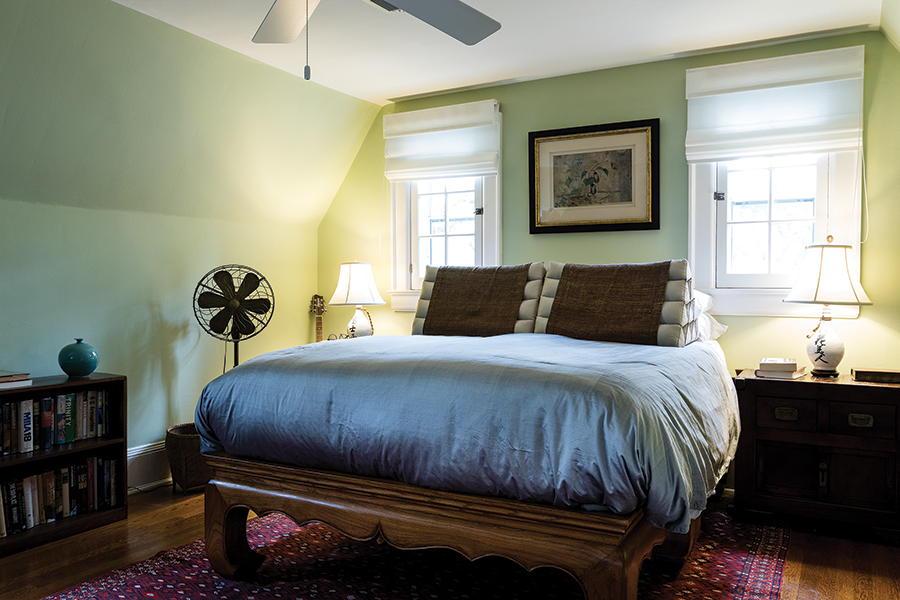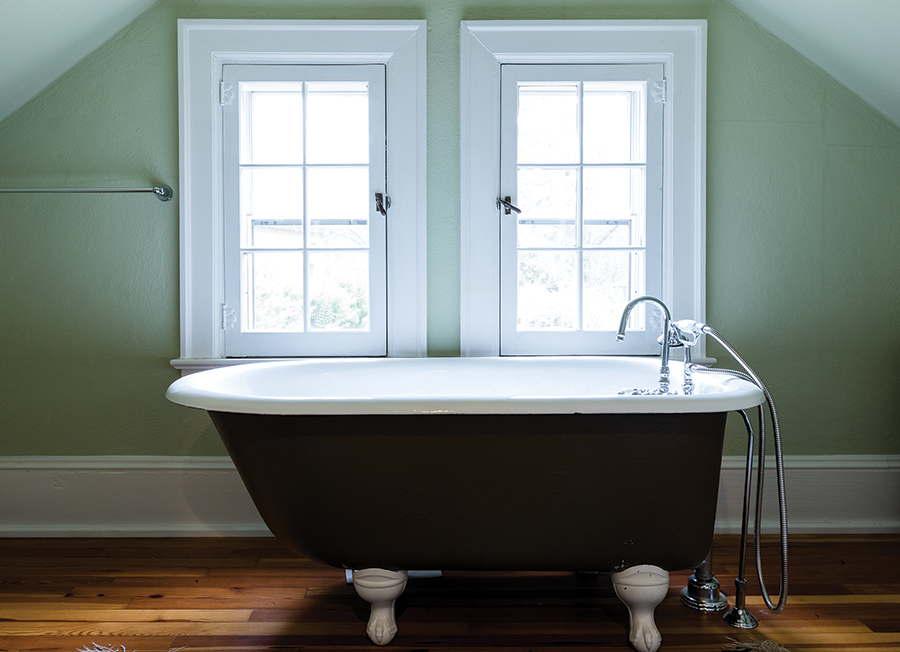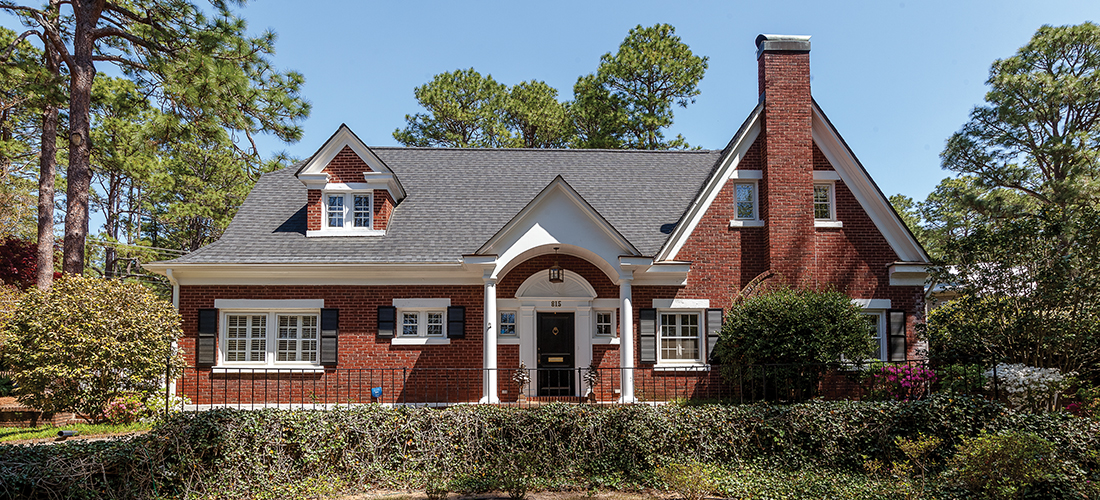
The house of a thousand stories chronicles a career abroad
By Deborah Salomon • Photographs by John Gessner
They met in a used furniture store in Columbia, South Carolina. Catherine was looking for a dresser. John was seeking distraction. He was from splashy Miami, “When it was young and empty.” She was from Albemarle — a doctor’s beautiful daughter raised in a gracious Southern home with wraparound porch, shaded by magnolias. Their life, a magic carpet ride through far-away kingdoms, plays out in a brick house on Massachusetts Avenue, attributed to society architect Aymar Embury II and Louis Lachine, an engineer associated with the Highland Pines Inn who, in the 1920s, built 10 spec houses near the resort hotel.
Now, this one runneth over not with Southern heirlooms but Asiana, Africana and a Marco Polo-worthy trove. John and Catherine Earp display more than a painting here and a table there. As a Ford Motor Company executive in the 1990s John was posted worldwide, primarily in Asia. “What we have collected is more about memories than things,” he says. Still, shipping their massive collection from posting to posting and finally to retirement in Southern Pines boggles the mind.
But with Ford footing the bill, why not?
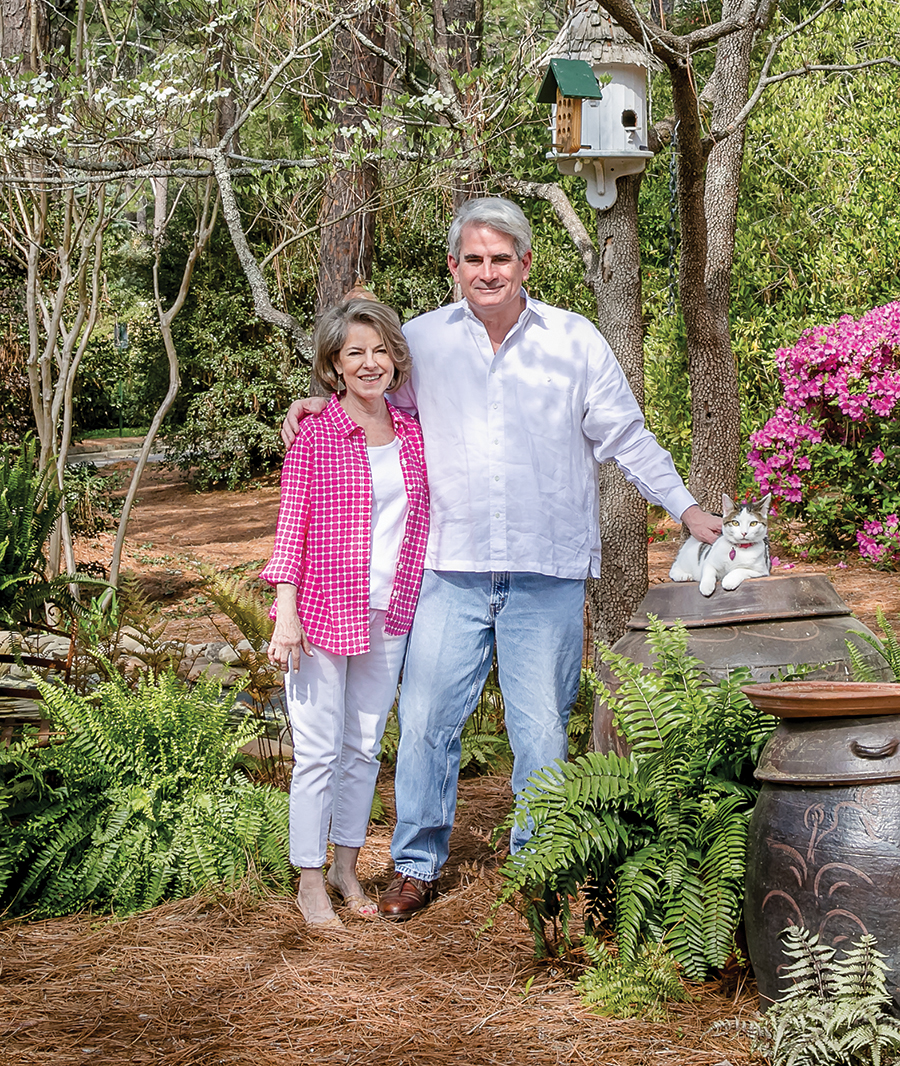
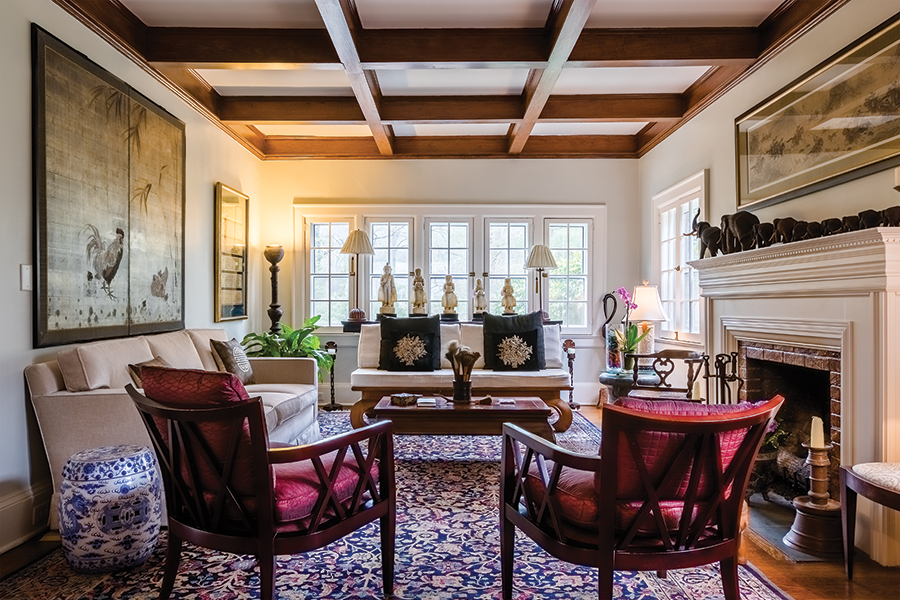
John was in the Army when he met Catherine. After discharge, he started with Ford in Cincinnati, Ohio, then Kansas City, Missouri, soon moving into the glamorous motor sports division. After two years, company hierarchy tapped him to open a new market, as director for Ford Motor Company in Korea.
“Is there a cookbook for that?” John asked.
No, but you’ll figure it out, the suits replied.
Catherine’s reaction: “Korea . . . where’s that? But I was excited, not apprehensive at all.”
Neither had a passport.
Off they went, first to a fabulous hotel for two months, then to an equally fabulous house overlooking a river, where they lived for two years.
The house needed furniture. Ford provided a $15,000 allowance. Catherine and John were already auction hounds. Oreos were an underground prize but in Korea they found “markets” similar to famous Les Puces (Fleas) in Paris. “The Koreans wanted everything new and modern; they weren’t interested in their grandmothers’ stuff,” Catherine discovered. This younger generation unloaded gems of the simple, practical Korean style — notably a stunning high-rise armoire in the living room, heavy chests meant for blankets and sleeping mats elsewhere. Some pieces, like the living room sofa with a teak frame, were made-to-order with distinctively Korean lines.
Then came Japan and Thailand, more markets, more décor finds.
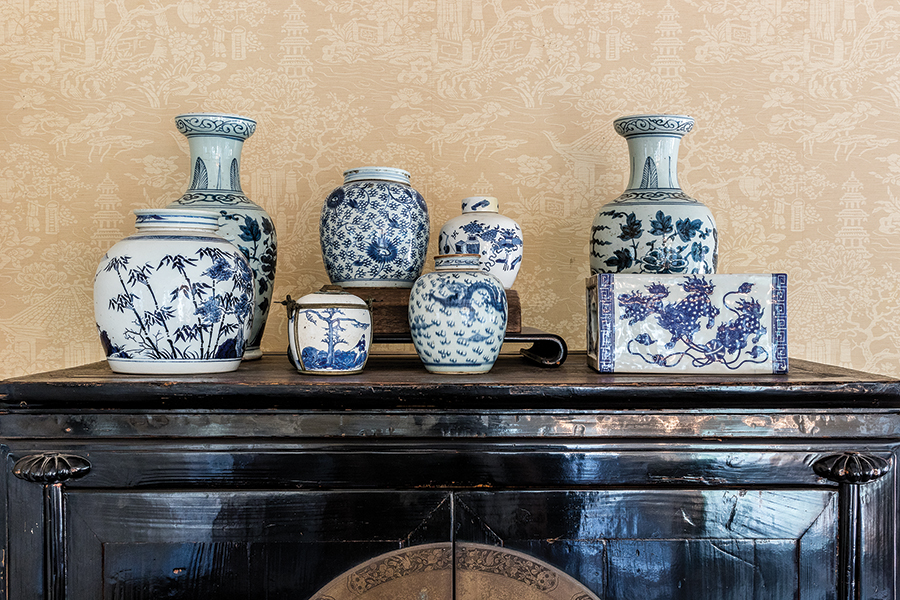
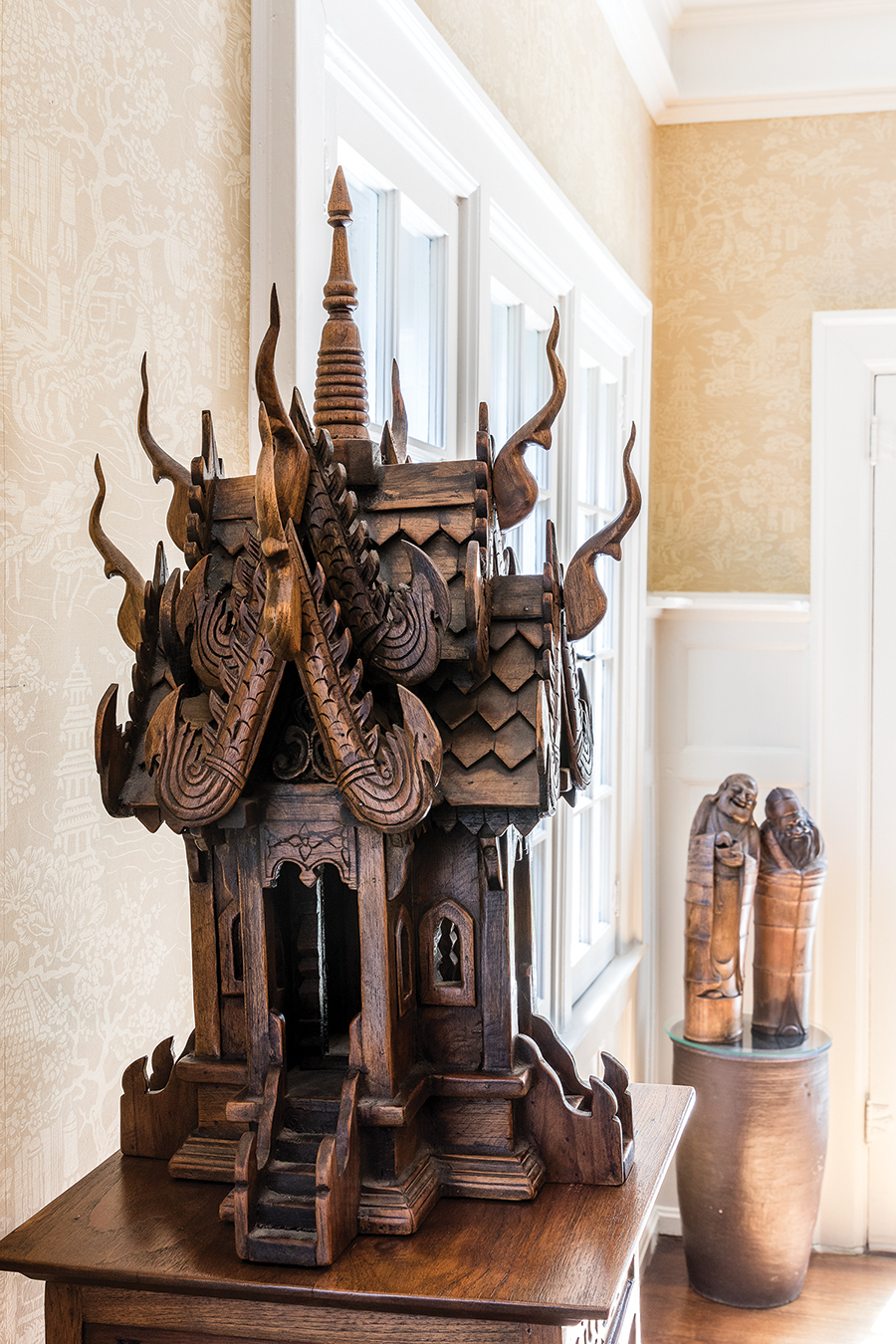
Western eyes blur Asian styles. The black lacquer cabinet in the dining room is actually a Chinese wedding chest, functioning like an American hope chest where brides stored linen gifts. Catherine points out her many elephant motifs emblematic of Thailand, beginning with 10 carved specimens parading across the living room mantel. Fronting a stretch of small-paned windows, vaguely British along with the coffered ceilings, stands a row of alabaster Buddhas from a Burmese monastery. Exporting them required untangling red tape with government ministries. “It’s a sign of respect to Buddha,” John says. “Having them here is a rare thing.”
But because they lived in several Buddhist countries, “We also have a reverence for him,” Catherine adds.
Bells, bells everywhere — from cow bells to temple bells to elephant bells — some massive, made from iron, stand in the foyer, while others, more delicate, are displayed in a glass-fronted curio case. Catherine has positioned her collection of Japanese dolls throughout the house. These armless, legless painted wooden kokeshi (some with bobble heads) look like precious bowling pins, too tall and heavy for cuddling. But the most fanciful objet d’art is a miniature “spirit house” resting on a fern stand in the dining room. Like birdhouses, these carved structures with spirals and wings erupting from walls and roof are placed outside the home, to welcome beneficial spirits. “Our real house in Thailand looked just like that,” Catherine says.
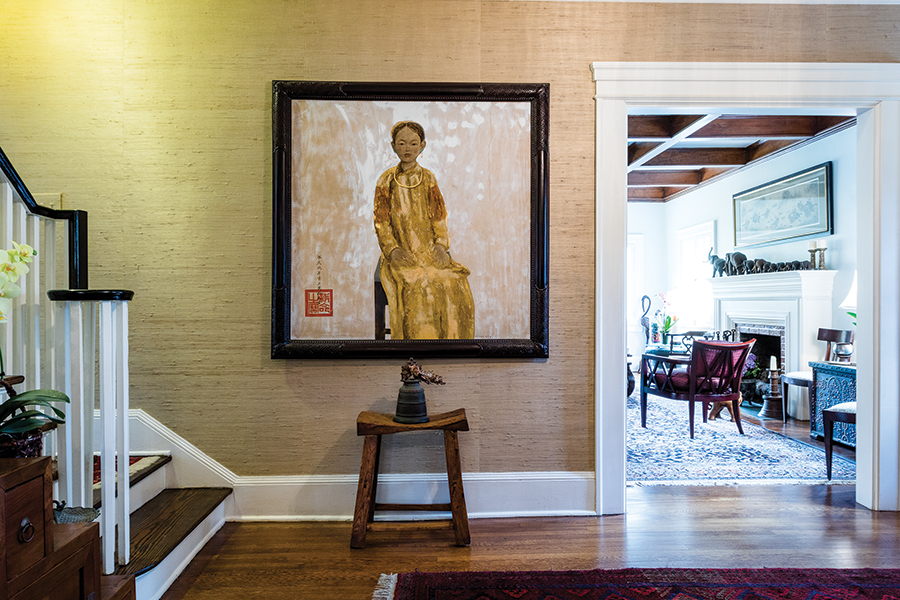
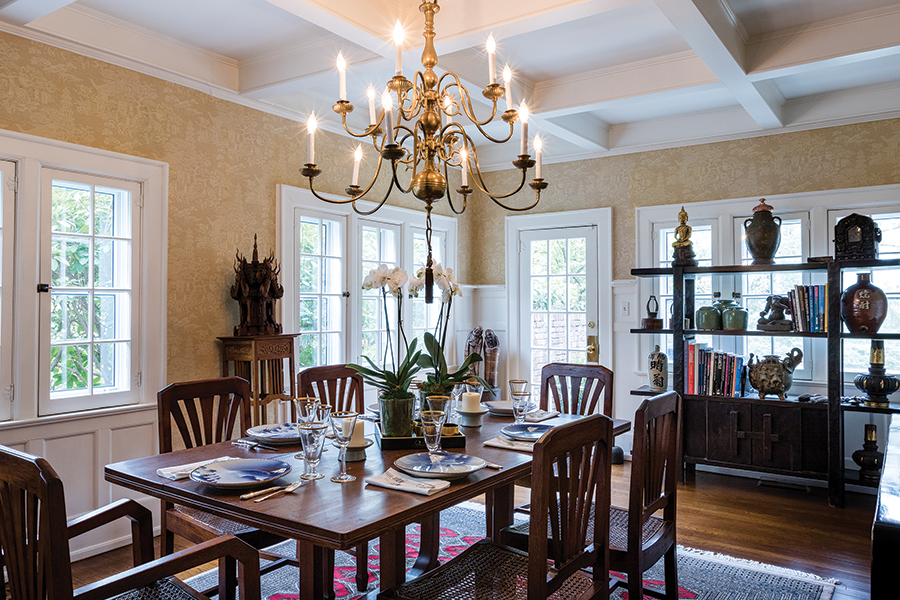
Their real house in Southern Pines has a circular floorplan; a tour begun in the large foyer tracks through the living room, dining room, kitchen, two dens/offices and back to the foyer without retracing a step. The original room designation remains a mystery. Catherine believes the two offices off the foyer might have been bedrooms with a bathroom, perhaps used as overflow accommodations by the Highland Inn. Outside, a terraced garden, fountain, pond and trellis covered with Confederate jasmine speak more North Carolina than South Korea.
The second floor, with lower ceilings and fewer moldings, suggests the house was planned for entertaining, with architectural details concentrated downstairs. Here, Catherine appreciates having enough wall space to display their art collection, including several waterscapes, some painted on lacquer, from Korea, where commercial fishing flourishes.
The kitchen had been enlarged and renovated by a previous owner who added a vaulted ceiling paneled in pickled wood — more Western than Eastern. However, musky olive green walls, a black enamel farm sink and sculpturesque gas cooktop mounted on the island impart an Asian flavor — except for statuettes of saints, brought from Central America, looking down from atop a cabinet.
Beyond the kitchen is a practical feature rarely seen in either classic or contemporary residences. A door opens into a hallway to the laundry, garage and stairs to the former maid’s quarters, now a private guest suite with heart pine floors, dormers, built-in drawers and claw-foot bathtub, all accessible without entering the house itself.
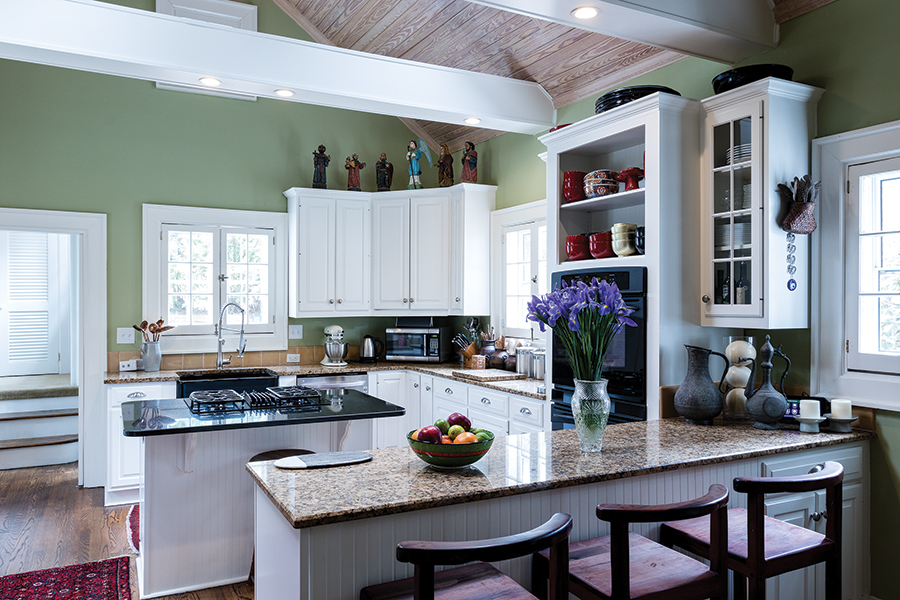
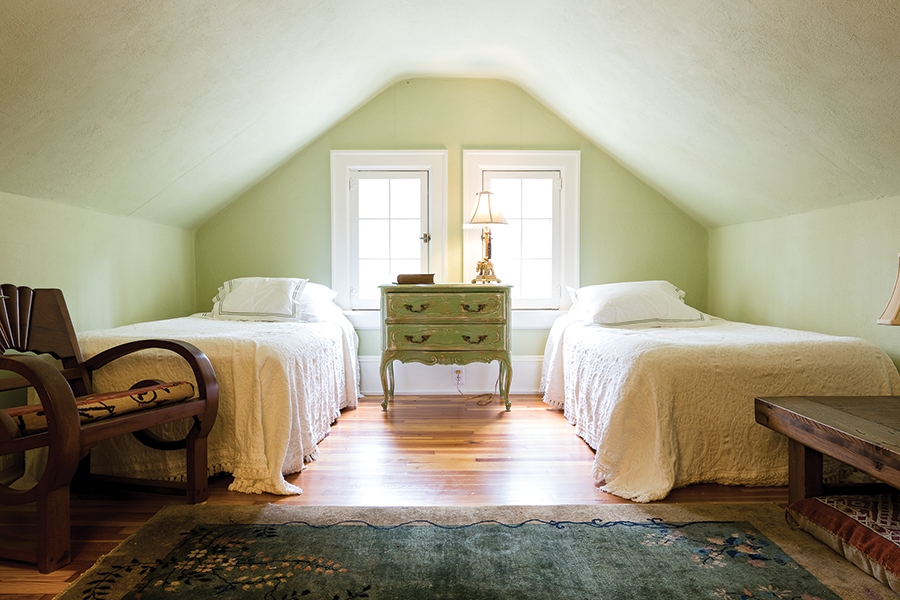
If Catherine loved Asia, South Africa left her positively ecstatic, perhaps because they lived on a predator-free game preserve where gentle kudus ate out of her hand, over a backyard fence. “The animals! You see these wonderful animals everywhere!” she says. Art and artifacts throughout the house, including zebra wallpaper in an upstairs bathroom, memorialize this experience.
“Africa changes you,” imprinting not just your house, but your soul, John says. Catherine felt closer to the earth from having lived there. “It’s just magical — both the animals and the people.”
John and Catherine enjoyed a lifestyle reminiscent of British colonials learning folkways from servants and drivers — not all positive. “Africa made me look at poverty differently,” Catherine says. “Our housekeeper taught us never to waste food, not a scrap.”
“Yet the people fought through poverty. They didn’t act poor. They were industrious,” John observes.
In 2013 the Earps (yes, he’s related to Wyatt, distantly) chose Southern Pines — and this house — for their retirement because Catherine’s sister lives down the street. Reason enough, without the existential link. For a decade or more the sturdy brick Weymouth residence was known as the H.H. Pethick house. Henry Pethick served as U.S. vice-consul in Saigon, in 1919. He then became a Standard Oil executive in China, returning only when Japan began bombing Canton, according to a Sept. 1937 edition of The Pilot. Mrs. Pethick had come back a year earlier, undoubtedly with household souvenirs. When the Pethicks sold the house in May 1945, a front page story described it as “one of the most attractive and elaborate residences in Southern Pines.”
No mention, however, of serene ghosts floating about in fine silk garments, waiting patiently for their ship, piloted by the Earps, to sail home. PS
